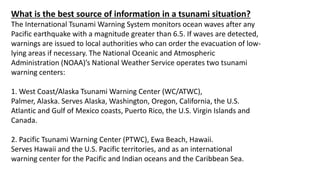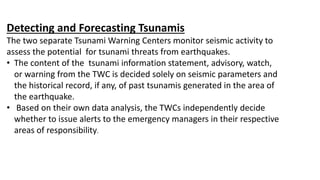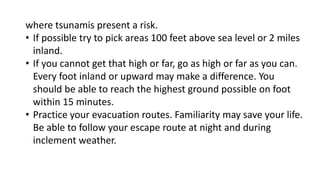A tsunami is a series of waves generated by the displacement of water, usually caused by earthquakes, volcanic eruptions, landslides or other disturbances. The International Tsunami Warning System monitors for tsunamis in the Pacific Ocean and issues warnings to local authorities. The best sources of information during a tsunami are the two Tsunami Warning Centers and local emergency management agencies who provide warning messages to notify the public of any tsunami risks.



















